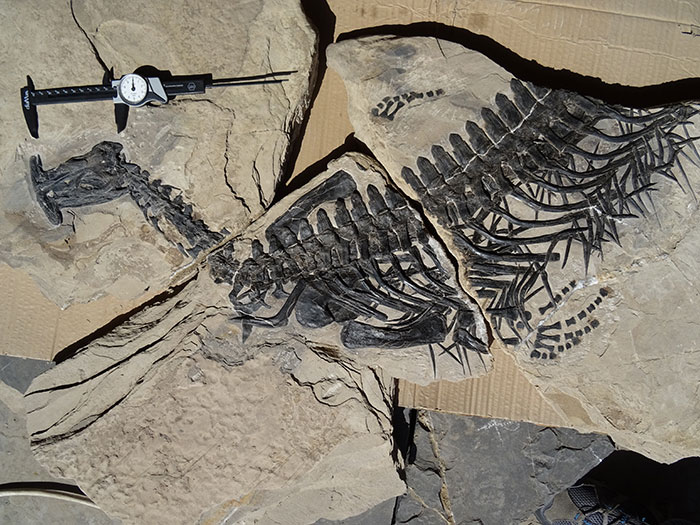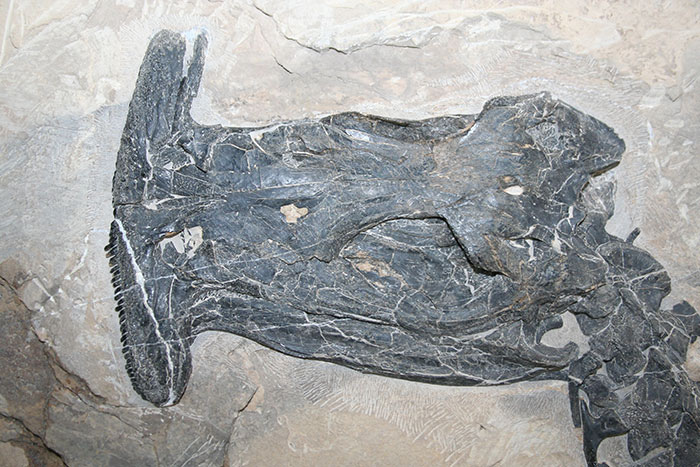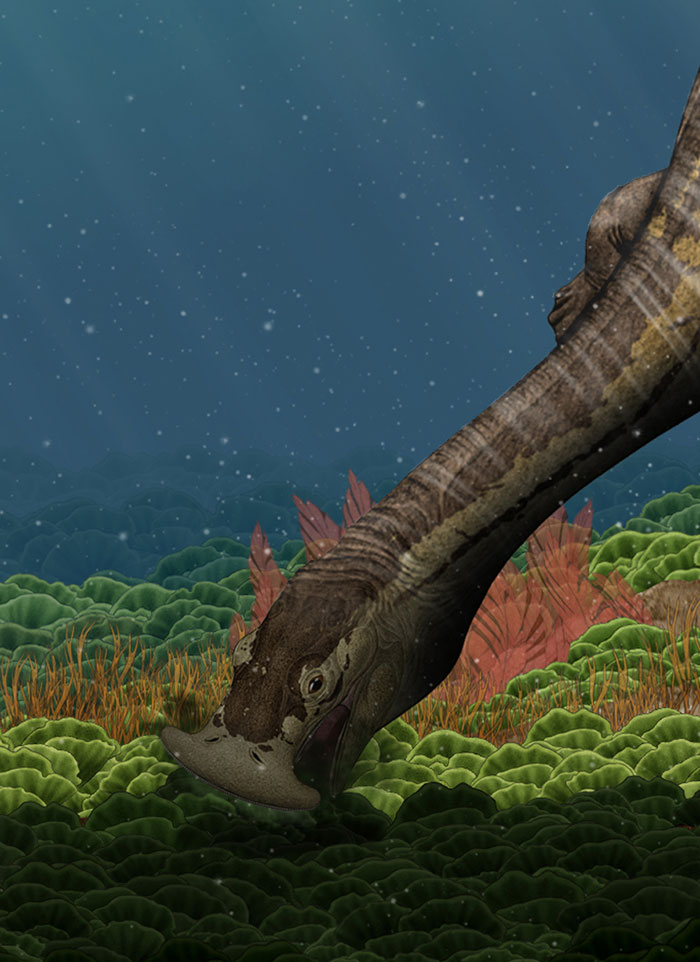
On a recent visit to the Institute of Vertebrate Palaeontology and Palaeoanthropology in Beijing, palaeontologist Li Chun confidentially leaned over to tell Olivier Rieppel and I that he had something special to show us. Now this didn’t surprise us in the slightest, as Li Chun had made a habit of blowing our minds with a series of remarkable fossils from the Middle Triassic of southern China. However, on this occasion we were speechless as he unveiled the exquisite skull of a beautifully articulated new fossil. The top of the skull, eye sockets and nostrils were all perfectly preserved, but that mattered little as our eyes were transfixed by what we saw at the front of the snout: prominent bony “wings” extending out on both sides. Here was the original hammerhead, and its mouth took the shape of something more akin to an attachment for a vacuum. It would have been possible to fit a hotdog sausage sideways on and still have room to spare! Not that the living animal would have thanked us for a sausage as it was an herbivore, but more of that later.

Two years previously, some other Chinese colleagues had described a single fossil reptile under the name Atopodentatus unicus (which roughly translates to “unique, bizarre dentition”). Although practically complete, the head was not as well preserved as the rest of the skeleton, but it was immediately clear that it possessed a battery of densely-packed, needle-shaped teeth on each side of the jaw. Just like a baleen whale, with its sheets of baleen, these teeth would have formed a perfect sieve for filter feeding; but what did it feed upon? Looking at the incomplete and displaced bones of the snout, our colleagues restored the animals with a very prominent down-turned “beak”. Taking this a step further it seemed highly likely that it used this “beak” to disturb crustaceans and other invertebrates living in the sediment at the bottom of the sea. It therefore seemed relatively straightforward for it to be capable of gulping in this invertebrate-enriched water and filtering it across the teeth lining the jaw.
So that was the story, until Li Chun showed us the new specimen and Atopodentatus became even more remarkable. There was no question that the new skull represented the same animal, but now we could see that as well as being developed into a “hammerhead”, the front edge of the jaw did not sport the needle-like teeth lining the rest of the jaw but a series of more chisel-like forms.

Such teeth are much more consistent with herbivory and that is when we started to piece together the puzzle. To help us, Li Chun conveniently discovered a second specimen, but this time with its palate exposed so that we could see into the roof of the mouth, and it soon became apparent that these chisel-like teeth were arranged into a tooth battery. Such a battery of teeth would have been ideal for scraping off plant and algae growing on rocks on the sea floor. Having scraped the plant debris into suspension in the water, Atopodentatus could then suck in mouthfuls and strain them across the mesh of needle-shaped teeth. Here then was the first case of herbivory in a marine reptile. As it turns out, since the Middle Triassic herbivory has always been very rare in marine vertebrates so that today there are only one or two examples, including adults of the Green Sea Turtle and also manatees.

Living some 243 million years ago, this wonderfully strange reptile swam the seas only nine million years after the end Permian mass extinction. This mass extinction was without question the greatest ever upheaval in life on Earth, with some estimates of extinction levels among marine animals as high as 96% – a truly cataclysmic event. Not surprisingly, it was widely thought that it took many millions of years for diversity levels to recover. However, recent finds in southern China are beginning to challenge that view.
We are now beginning to see an array of diverse forms with very specialised dietary habits living relatively soon after the end Permian. In addition to a variety of ichthyosaurs, placodonts and archosaurs, there are less familiar animals, such as the extraordinarily long necked Dinocephalosaurus, whose neck was equal in length to that of the body and tail combined. To this growing list of diverse forms we can now add Atopodentatus – currently the number one contender for the most specialised diet of its day.

